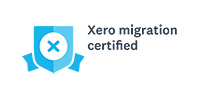The personal allowance for 2018/19 is £11,850. However, some individuals do not benefit from the full personal allowance. There is a reduction in the personal allowance for those with ‘adjusted net income’ over £100,000, which is £1 for every £2 of income above £100,000. So for 2018/19 there is no personal allowance where adjusted net income exceeds £123,700.
The basic rate of tax is currently 20%. From 6 April 2018 the band of income taxable at this rate is £34,500 so that the threshold at which the 40% band applies is £46,350 for those who are entitled to the full personal allowance. Additional rate taxpayers pay tax at 45% on their income in excess of £150,000.
The tax on income (other than savings and dividend income) is different for taxpayers who are resident in Scotland to taxpayers resident elsewhere in the UK. The Scottish income tax rates and bands apply to income such as employment income, self-employed trade profits and property income.
In the 2018/19 Scottish Budget, the Finance and Constitution Secretary for Scotland, Derek Mackay announced significant changes to income tax bands and rates for Scottish resident taxpayers, introducing five possible income tax rates. The income tax rates range between 19% and 46%. Scottish taxpayers are entitled to the same personal allowance as individuals in the rest of the UK.
| Scottish Bands £ | Band name | Scottish Rate |
| 0 – 2,000 | Starter | 19% |
| 2,001 – 12,150 | Basic | 20% |
| 12,151 – 31,580 | Intermediate | 21% |
| 31,581 – 150,000 | Higher | 41% |
| Over 150,000 | Top | 46% |
From April 2019, the National Assembly for Wales has the right to vary the rates of income tax payable by Welsh taxpayers.










